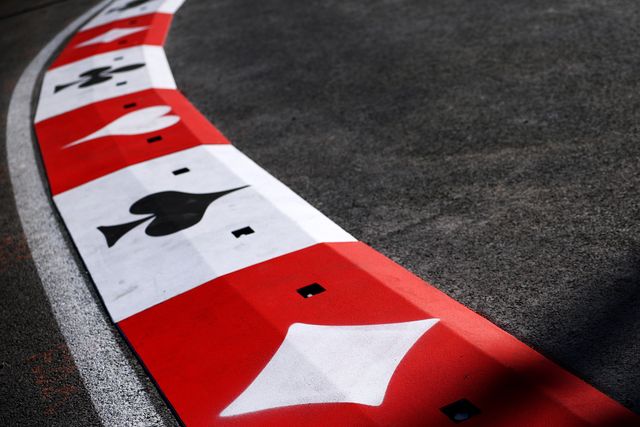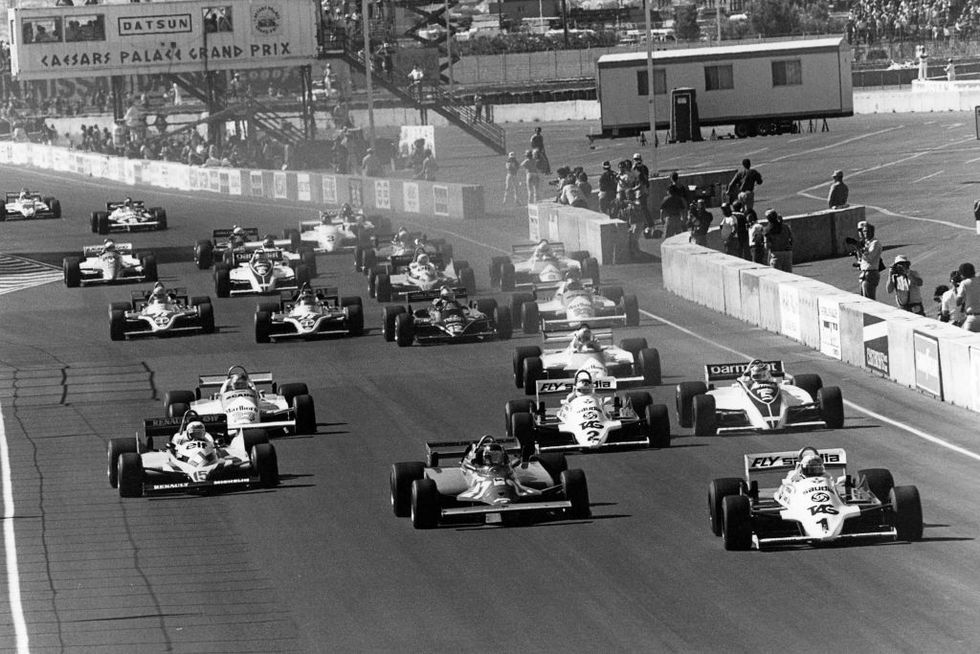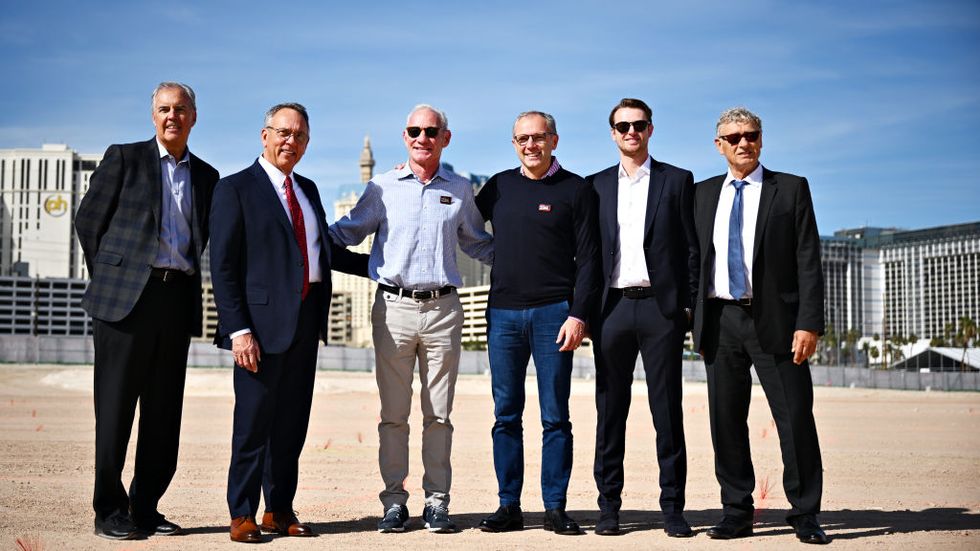- How do you design a race track in Las Vegas?
- The last time Formula 1 raced in Las Vegas in the early 1980s a rudimentary and repetitive circuit was created in a hotel car park at Caesars Palace. For 2023’s return to the desert, the field of 20 cars will hurtle along some of Las Vegas’ most iconic streets, including the Strip, at night.
- Autoweek catches up with track designer Carsten Tilke to discuss taking the concept into reality.
Formula 1’s third Grand Prix in the United States this year is undoubtedly its most anticipated.
After the Miami Grand Prix at the semi-permanent street-inspired Miami International Autodrome, and the United States Grand Prix at the purpose-built road course Circuit of the Americas comes the Las Vegas Grand Prix at the Las Vegas Strip Circuit.
The 3.85-mile circuit, which will result in a 50-lap race, is among the longest on the F1 schedule and incorporates key components of downtown Las Vegas.
The pits/paddock complex, constructed on land Formula 1 acquired for more than $200 million, features a sequence of bends that opens up into Koval Lane, before drivers swing right onto Westchester Drive and circumnavigate the newly-built MGS Sphere. A left onto Sands Avenue takes drivers behind the Venetian Expo before another left starts the full-throttle blast along the Las Vegas Boulevard, better known as the Strip.
The Strip accounts for almost one-third of the circuit’s length before a heavy braking zone and chicane brings the pack onto East Harmon Avenue and toward the start/finish line.
Renowned circuit designers Tilke worked with Formula 1 and the consortium of Las Vegas partners over the layout of the championship’s new venue.
“The main goal for everyone was to use the main features of Las Vegas,” said project leader Carsten Tilke. “Even if you’ve never been to Las Vegas you’ll know that street very well.
“From that starting point we looked at different configurations and layouts—and the next question is always where do you put the start/finish line, where do you put the garages, the team hospitalities. And then Liberty Media had the opportunity to buy the piece of land (for the paddock), and that was the missing piece.”
That gave Tilke the starting and ending point, and the circuit’s showpiece section, but then the remainder had to be drafted, and with multiple considerations.
The street-based nature means “you are very limited in the space that you have, and you cannot build completely new streets or go over parking lots,” but there are still factors to consider: how to make a circuit that will be enjoyed by drivers, be good for racing, provide a good spectacle for TV audiences and trackside spectators, while also limiting disruption for the city and ensuring hotels, shops and facilities within the track still have access.
“We had a good phrase, which was it’s one piece art, it’s one piece science and it’s one piece magic! This is the challenge always and of course firstly (what we need) is we have a safe track which needs to be homologated by FIA. This is very important because if it’s not homologated we cannot race there. So we need to look, especially at a street circuit, how can we manage to create the runoffs which we need? How can we manage to play with the speed profiles at different corners that that is acceptable by the FIA, are responsible, that this is also a safe venue?
“So you have the Strip, then you have an area where you’re doing the paddock, and then of course how to connect these two areas in a track length, which is about four to six kilometers, maybe seven kilometers. You don’t want to have it’s too long, not too short. So then you look at what streets can you use, what is actually the possibility of streets you can use and if you know the streets which you can use, how can you make this as exciting as possible for the drivers and where can you put spectators, and also make nice areas for spectators.
“For example, around the Sphere we now have a chicane where we slow down the cars. On one hand this was done to decrease the speed at this area, but on the other hand, it was also to have an area for spectators to see the cars for a longer time and to see them braking into this corner, going over the curbs.”
The flat circuit will not exactly be a test of a car’s aerodynamics in the vein of Silverstone or Suzuka but there are elements of Baku and Monza in Las Vegas’ throttle-heavy layout.
“It will be a fast, fast track,” says Tilke. “It has this really long straight on the Strip, about 1.8 km (approx. 1.1 mile), then it has two other sections where you have about 800 meters straight (on East Harmon Avenue) and then another section with about one kilometer (on Koval Lane).
“I think you will have a lot of overtaking possibilities as we have a lot of straights. You have one corner and then you have another straight, so maybe you can re-attack while using the slipstream then on the next straight again.
“Then we have two not so fast sections which comes from Turn 1 to 4, so it’ll be important to have a really good exit and be early on the throttle here, and then there’s the section from Turns 5 to 9, this is the chicane section.
“Then we have also along Sands Avenue quite fast corners, probably they will be driven at full acceleration, so let’s see how the tires work here, it’ll be a fast flowing (section), but then into the next corner, which leads onto the Las Vegas Boulevard, you need to get this corner right. So if you’re in the defending mode or something and you don’t get the right exit to this corner you’ll lose a lot of time on the straight.”
Some street circuits remain closed to the public through the weekend but, like Monaco, Las Vegas’ roads will be open for traffic outside of Formula 1’s sessions.
“The setup needs to be very fast,” Tilke said. “We’ve made it as comfortable as possible for everyone in this city. We worked closely with the main stakeholders: how can we open everything, how can we make the traffic flow after the Formula 1? How can we make it as smooth as possible for the residents, for the casinos, for the hotels, the shops, for everything?”
Tilke, understandably, is excited to see the latest project blossom into fruition when Formula 1 cars take to the illuminated city-based track.
“I think it will be one of the greatest spectacles ever seen,” he says. “I think it’s a perfect match. Las Vegas is the biggest entertainment city. It has the greatest shows, the greatest artists and entertainers and now Formula 1 is coming.
“Every time I go (to Las Vegas), the city is packed with people. Everyone is looking for a nice time. Everyone is in a good mood. So it’s a nice city. And when Formula 1 is coming I think this will be a great match and I can’t wait to see it develop. Formula 1 is doing everything to put the greatest show there.”
Read the full article here






